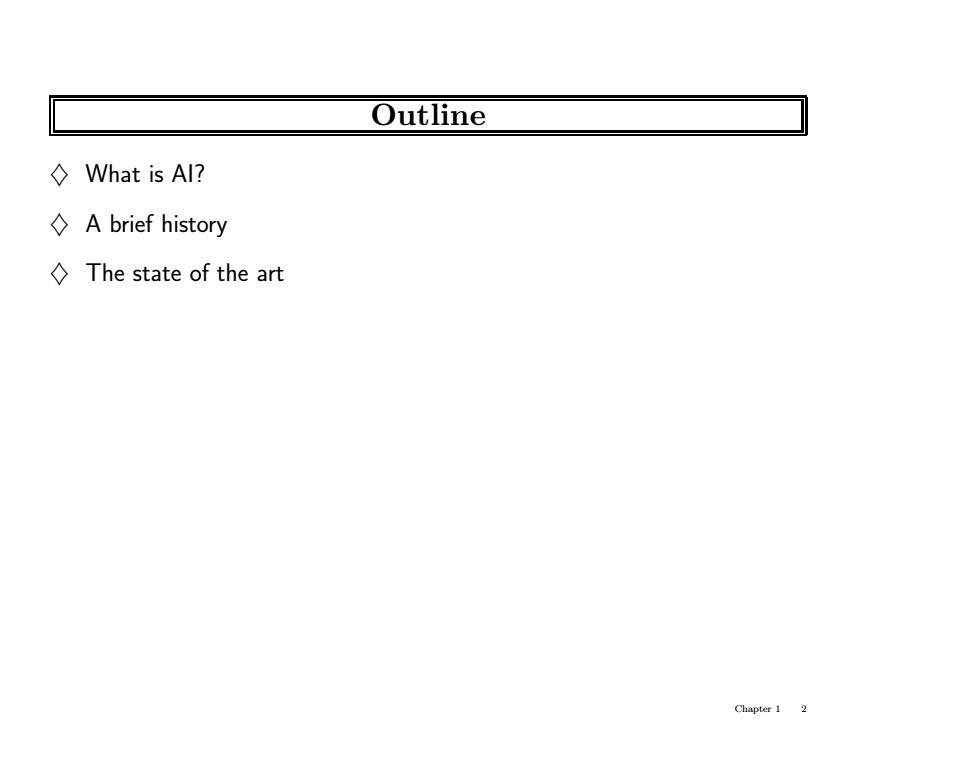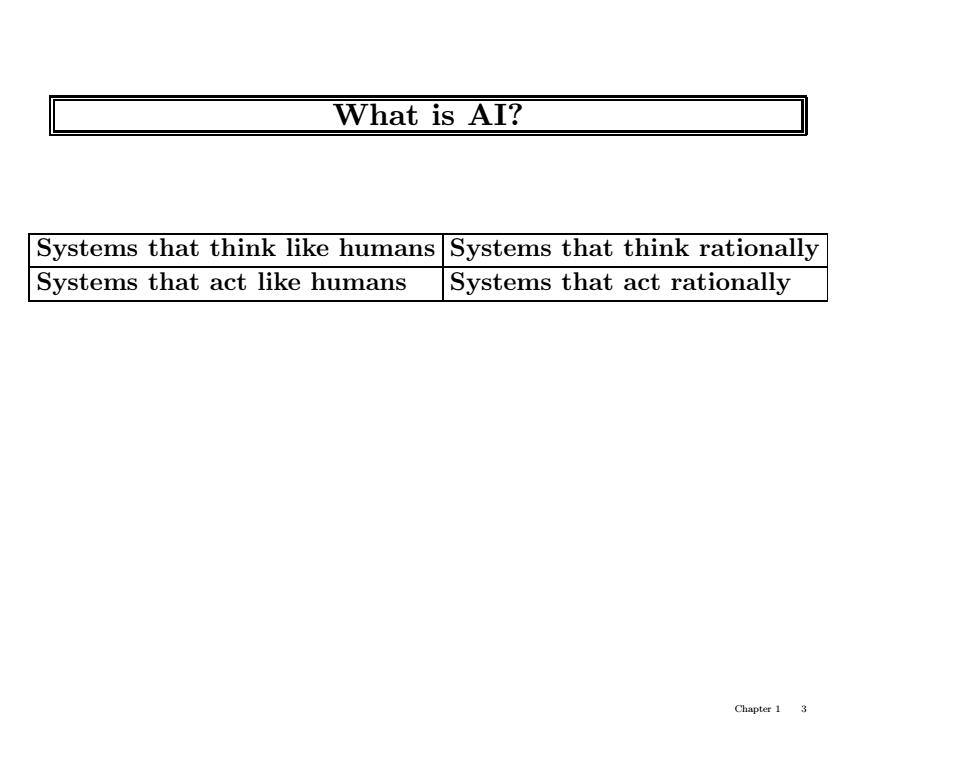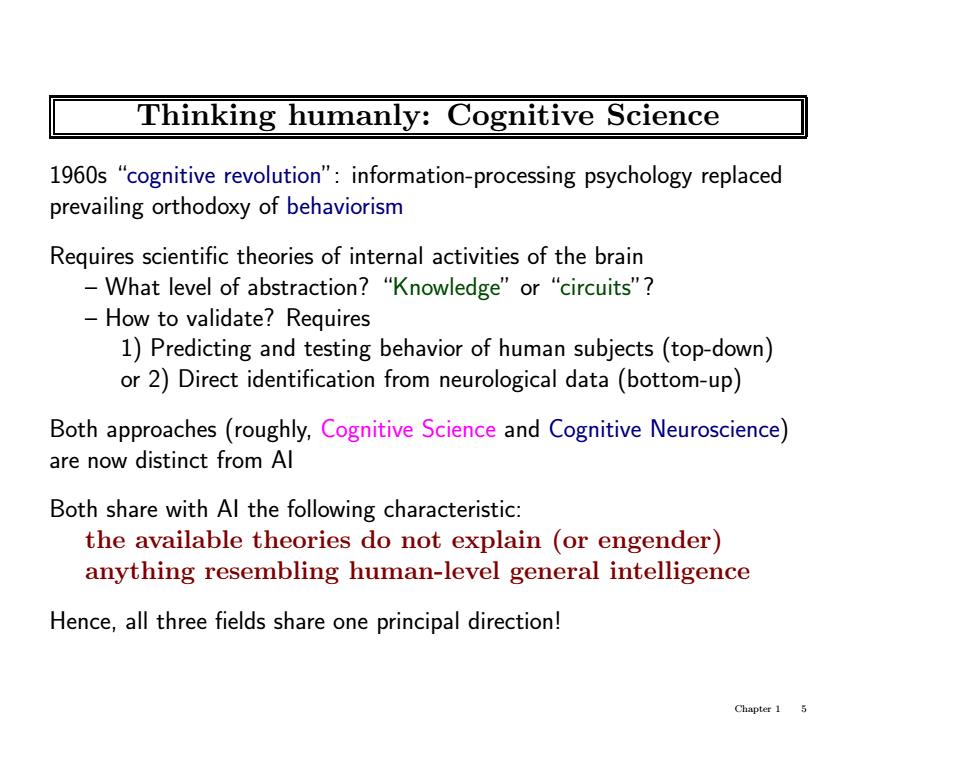
ARTIFICIAL INTELLIGENCE CHAPTER 1 Chapter 11
Artificial Intelligence Chapter 1 Chapter 1 1

Outline ◇What is Al? ◇A brief history ◇The state of the art Chapter 1 2
Outline ♦ What is AI? ♦ A brief history ♦ The state of the art Chapter 1 2

What is AI☒ Systems that think like humans Systems that think rationally Systems that act like humans Systems that act rationally Chapter 1 3
What is AI? Systems that think like humans Systems that think rationally Systems that act like humans Systems that act rationally Chapter 1 3

Acting humanly:The Turing test Turing(1950)"Computing machinery and intelligence": ◇“Can machines think?”→“Can machines behave intelligently?" Operational test for intelligent behavior:the Imitation Game HUMAN HUMAN INTERROGATOR AI SYSTEM Predicted that by 2000,a machine might have a 30%chance of fooling a lay person for 5 minutes Anticipated all major arguments against Al in following 50 years Suggested major components of Al:knowledge,reasoning,language understanding,learning Problem:Turing test is not reproducible,constructive,or amenable to mathematical analysis Chapter 1 4
Acting humanly: The Turing test Turing (1950) “Computing machinery and intelligence”: ♦ “Can machines think?” −→ “Can machines behave intelligently?” ♦ Operational test for intelligent behavior: the Imitation Game AI SYSTEM HUMAN ? HUMAN INTERROGATOR ♦ Predicted that by 2000, a machine might have a 30% chance of fooling a lay person for 5 minutes ♦ Anticipated all major arguments against AI in following 50 years ♦ Suggested major components of AI: knowledge, reasoning, language understanding, learning Problem: Turing test is not reproducible, constructive, or amenable to mathematical analysis Chapter 1 4

Thinking humanly:Cognitive Science 1960s "cognitive revolution":information-processing psychology replaced prevailing orthodoxy of behaviorism Requires scientific theories of internal activities of the brain -What level of abstraction?“Knowledge'”or“circuits"? How to validate?Requires 1)Predicting and testing behavior of human subjects(top-down) or 2)Direct identification from neurological data(bottom-up) Both approaches(roughly,Cognitive Science and Cognitive Neuroscience) are now distinct from Al Both share with Al the following characteristic: the available theories do not explain (or engender) anything resembling human-level general intelligence Hence,all three fields share one principal direction! Chapter 1 5
Thinking humanly: Cognitive Science 1960s “cognitive revolution”: information-processing psychology replaced prevailing orthodoxy of behaviorism Requires scientific theories of internal activities of the brain – What level of abstraction? “Knowledge” or “circuits”? – How to validate? Requires 1) Predicting and testing behavior of human subjects (top-down) or 2) Direct identification from neurological data (bottom-up) Both approaches (roughly, Cognitive Science and Cognitive Neuroscience) are now distinct from AI Both share with AI the following characteristic: the available theories do not explain (or engender) anything resembling human-level general intelligence Hence, all three fields share one principal direction! Chapter 1 5